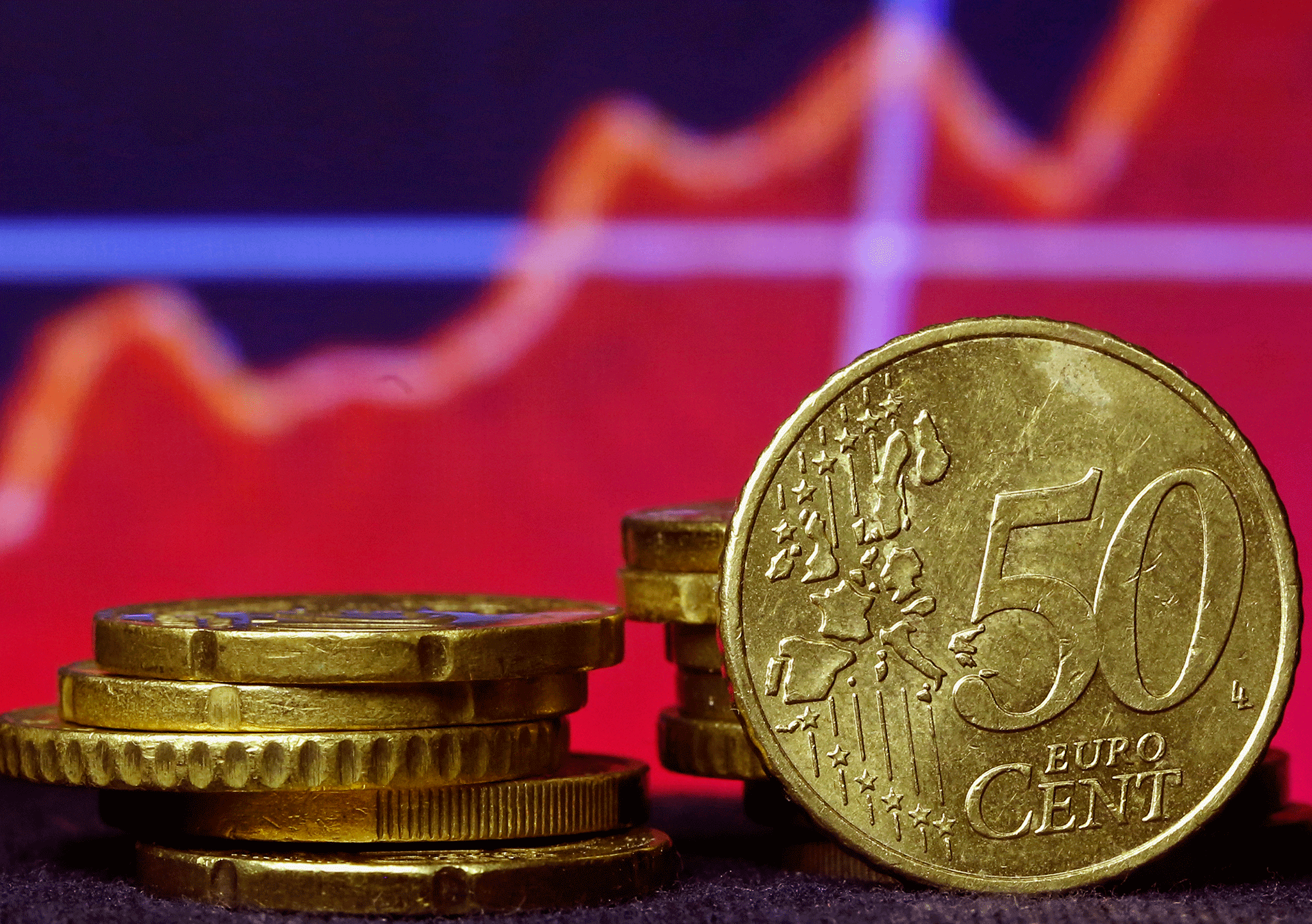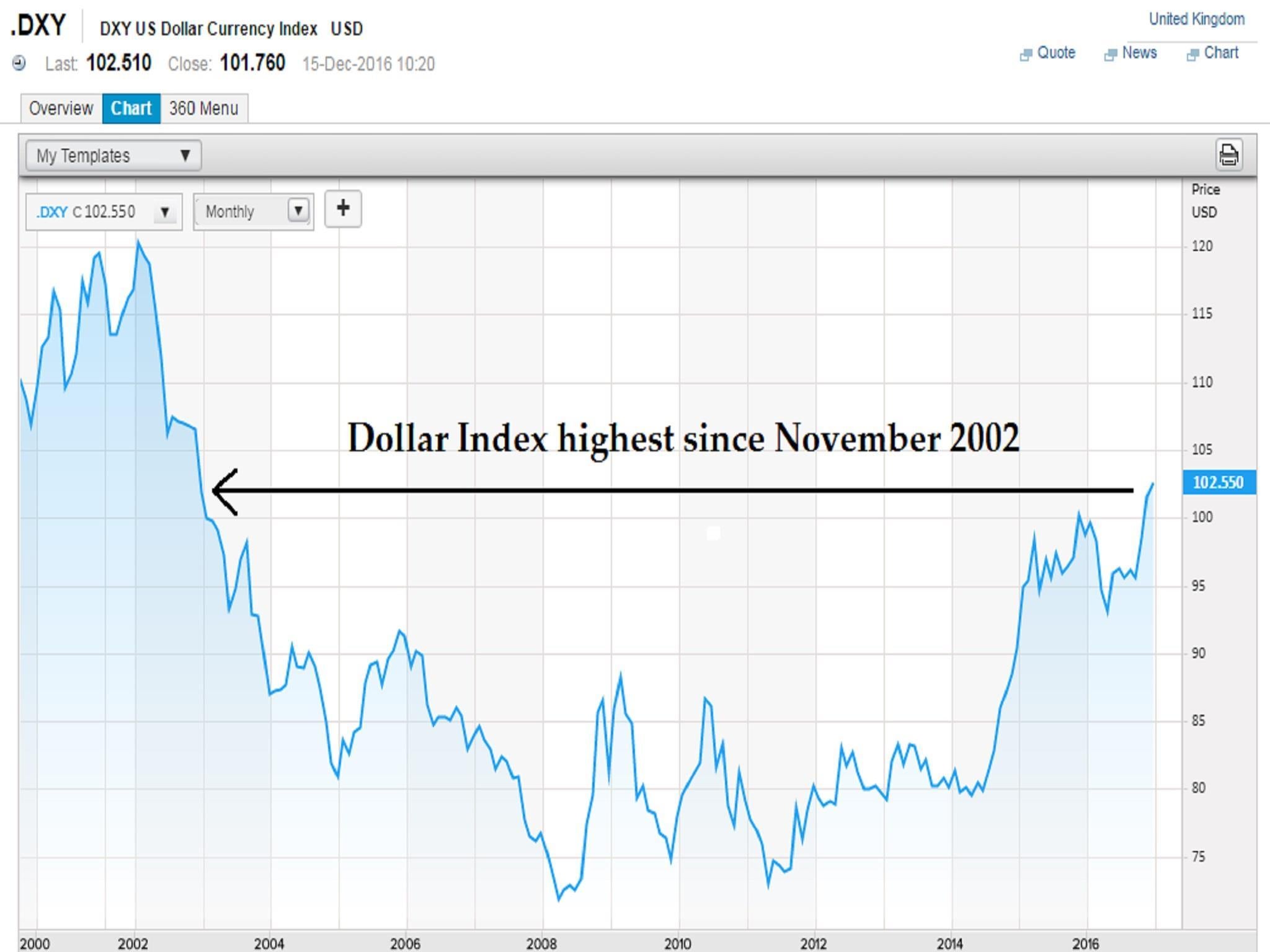Euro plunges to 14-year low against dollar as Federal Reserve hikes interest rates
US currency has hit its highest level since 2002 as investors predict a Donald Trump spending bonanza

Your support helps us to tell the story
From reproductive rights to climate change to Big Tech, The Independent is on the ground when the story is developing. Whether it's investigating the financials of Elon Musk's pro-Trump PAC or producing our latest documentary, 'The A Word', which shines a light on the American women fighting for reproductive rights, we know how important it is to parse out the facts from the messaging.
At such a critical moment in US history, we need reporters on the ground. Your donation allows us to keep sending journalists to speak to both sides of the story.
The Independent is trusted by Americans across the entire political spectrum. And unlike many other quality news outlets, we choose not to lock Americans out of our reporting and analysis with paywalls. We believe quality journalism should be available to everyone, paid for by those who can afford it.
Your support makes all the difference.The euro plunged to its lowest level against the dollar since January 2003 on Thursday, as the US currency made strong gains after the Federal Reserve signaled more interest rate rises in 2017.
The single currency fell as low as $1.0430 having lost more than 2 cents since before the Fed’s announcement.
Meanwhile, the dollar surged to its highest level against a basket of major peers since 2002 after only the second rate hike since the global economy faced meltdown in 2008.
The move was widely expected but the suggestion on Wednesday from Fed Chair Janet Yellen that three more rate rises could be in store in 2017 took markets by surprise. At 0.75 per cent interest rates are still at historic lows.
The greenback continued to gain on Thursday, climbing as much as 0.8 per cent against a basket of major peers to hit 102.66, its highest since 2002. Higher interest rates indicate higher returns for investors, causing a currency to appreciate.

The move suggests the Fed believes that the economy has improved enough over the past year to withstand an increase in borrowing rates.
The Fed's policy meeting was the first since Donald Trump’s shock election win. The President-elect has pledged a huge spending bonanza which is expected to stimulate demand in the economy, pushing up inflation and boosting growth.
Ms Yellen however, said that the moment for a deficit-fueled stimulus to improve job creation has probably passed. With unemployment at a nine-year low of 4.6 per cent, Ms Yellen said she thought employers no longer needed large tax cuts and heavy infrastructure spending to create jobs.
A major stimulus of the kind Trump has promised could in fact pose risks, the Fed Chair said, pointing to the added burden of increased government debt.
"As our population ages, the debt-to-GDP ratio is projected to rise," she said. "And that needs to continue to be taken into account."
At least five of 17 Fed policymakers appeared to have boosted their interest rate outlook since September, according to the new "dot plot" of rate projections. But not all traders and analysts viewed the Fed's statement as hawkish.
"The macroeconomic forecast is unchanged...and the dots have shifted only very slightly – the median dots went up by 25 basis points but the average only went up 6 basis points," said UBS Wealth Management's head of currency strategy, Thomas Flury, in Zurich.
"Yellen pointed out that uncertainties are exceptionally high, and we know that when uncertainties are high the Fed is more moderate than hawkish. So from the Fed's perspective the communication was fairly neutral."
Against the yen, the dollar jumped as much as 0.7 per cent on the day to hit 117.87, its strongest since February.
Additional reporting by Reuters
Join our commenting forum
Join thought-provoking conversations, follow other Independent readers and see their replies
Comments